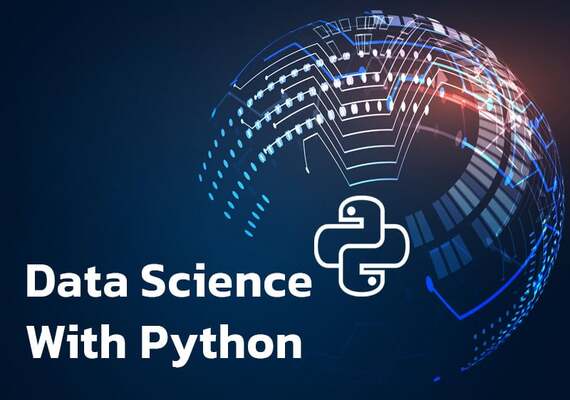
Overview of Data Science with Python Training
Data Science with Python training at Ariyath Academy, the best software institute in Tiruvannamalai, offers a comprehensive exploration of big data classes using the Python programming language. Participants delve into various Python libraries and tools essential for data manipulation, analysis, and visualization, such as NumPy, Pandas, and Matplotlib.
The course extensively covers statistical concepts and machine learning algorithms, enabling learners to extract meaningful insights and patterns from large datasets. Practical application of data science techniques through hands-on projects is a key component, allowing participants to hone their skills in real-world scenarios.
Moreover, the training delves into data ethics, best practices, and communication of findings to diverse audiences. As the field of data science continues to evolve, this training equips individuals with the foundational skills and expertise needed to navigate the complex landscape of data-driven decision-making and analytics. Participants can also opt for certifications such as the Google Data Analytics Professional Certificate or the IBM Data Science Professional Certificate, enhancing their credentials and career opportunities in the data science domain.
Syllabus
- • The objective of this Data Science with Python course is to equip students with the knowledge and skills necessary to effectively perform data analysis, visualization, and machine learning using Python.
- • Basic Introduction to the Numpy Creation of Numpy Arrays
- • Array attributes & Numpy Data Types
- • View vs Copy
- • How to iterate elements of the nd array
- • Arithmetic operators
- • Broadcasting
- • Array manipulation functions
- • Joining of multiple
- • Arrays into a single array Splitting of arrays
- • Sorting elements of ndarrays Searching elements of ndarray
- • How to insert elements into ndarray
- • How to delete elements from ndarray
- • Matric multiplication by using dot() function
- • Importance of matrix class in numpy library
- • Linear algebra functions from linalg module
- • I/O operations with Numpy
- • Basic statistics with Numpy
- • Numpy mathematical functions
- • How to find unique items and count
- • Introduction
- • Environment Setup
- • Introduction to Data Structures
- • Series
- • Panel
- • Basic Functionality
- • Descriptive Statistics
- • Function Application
- • Working with Text Data
- • Options and Customization
- • Indexing and Selecting Data
- • Statistical Functions
- • Window Functions
- • Aggregations
- • Missing Data
- • Group By
- • Merging/Joining
- • Concatenation
- • Date Functionality
- • Categorical Data
- • Visualization
- • 10 Tools
- • Introduction to Matplotlib
- • Line Plot- Basics
- • Line Plots-Advanced
- • How to add grid lines to plot
- • Adding Legend
- • Customization of
- • Tick Location and Labels
- • How to set scale of x-axis and y-axis
- • Plotting Styles
- • Pie Chart
- • Histogram
- • Scatter Plots
- • Subplots
- • Animations
What Is Data Science with Python?
Data Science with Python refers to the application of the Python programming language in the field of data science, a multidisciplinary domain focused on extracting meaningful insights and knowledge from large and complex datasets.
In this context, learning Data Science with Python involves acquiring proficiency in utilizing specific Python libraries like Pandas for data manipulation, NumPy for numerical computing, and tools like Matplotlib or Seaborn for visualizing data.
The combination of Python's user-friendly syntax and the comprehensive capabilities of its data science libraries makes it a preferred choice for individuals seeking to analyze data, build predictive models, and contribute to the data-driven decision-making processes across various industries.
Why Should You Learn Data Science with Python?
Learning Data Science with Python is a strategic decision owing to the language's versatility, extensive library support, and widespread adoption in the data science community.
Python's readability and simplicity make it an ideal language for beginners, while its robust ecosystem of libraries—such as Pandas for data manipulation, NumPy for numerical computing, and Scikit-learn for machine learning—provides powerful tools for every stage of the data science workflow.
The active Python community ensures ample resources and support for learners, facilitating a smooth educational journey.
Python's integration with big data technologies, its role in AI and machine learning frameworks like TensorFlow and PyTorch, and its proficiency in data visualization through Matplotlib and Seaborn further reinforce its significance in the data science landscape.
Beyond technical advantages, learning Data Science with Python enhances employability, as many industries prioritize Python for data-centric roles, making it a valuable skill for individuals aspiring to succeed in the dynamic and growing field of data science.
Upcoming Batches
| October 4 | SAT & SUN weekend batch |
Timings 9:00AM to 11:00AM |
| October 11 | SAT & SUN Online batch |
Timings 9:00AM to 11:00AM |
| October 23 | MON & THU Offline batch |
Timings 9:00AM to 11:00AM |
| October 27 | MON & THU Blended batch |
Timings 9:00AM to 11:00AM |







